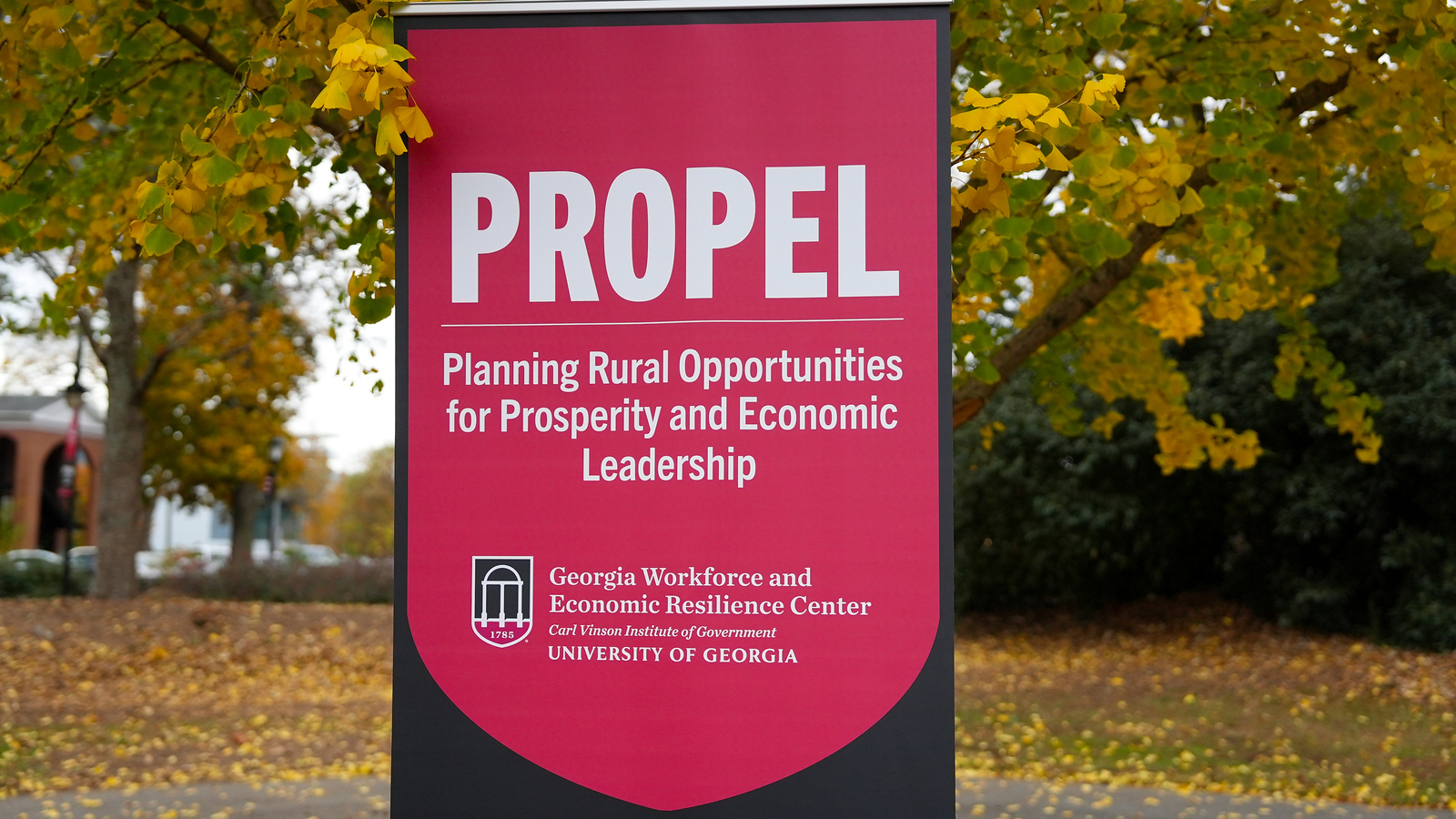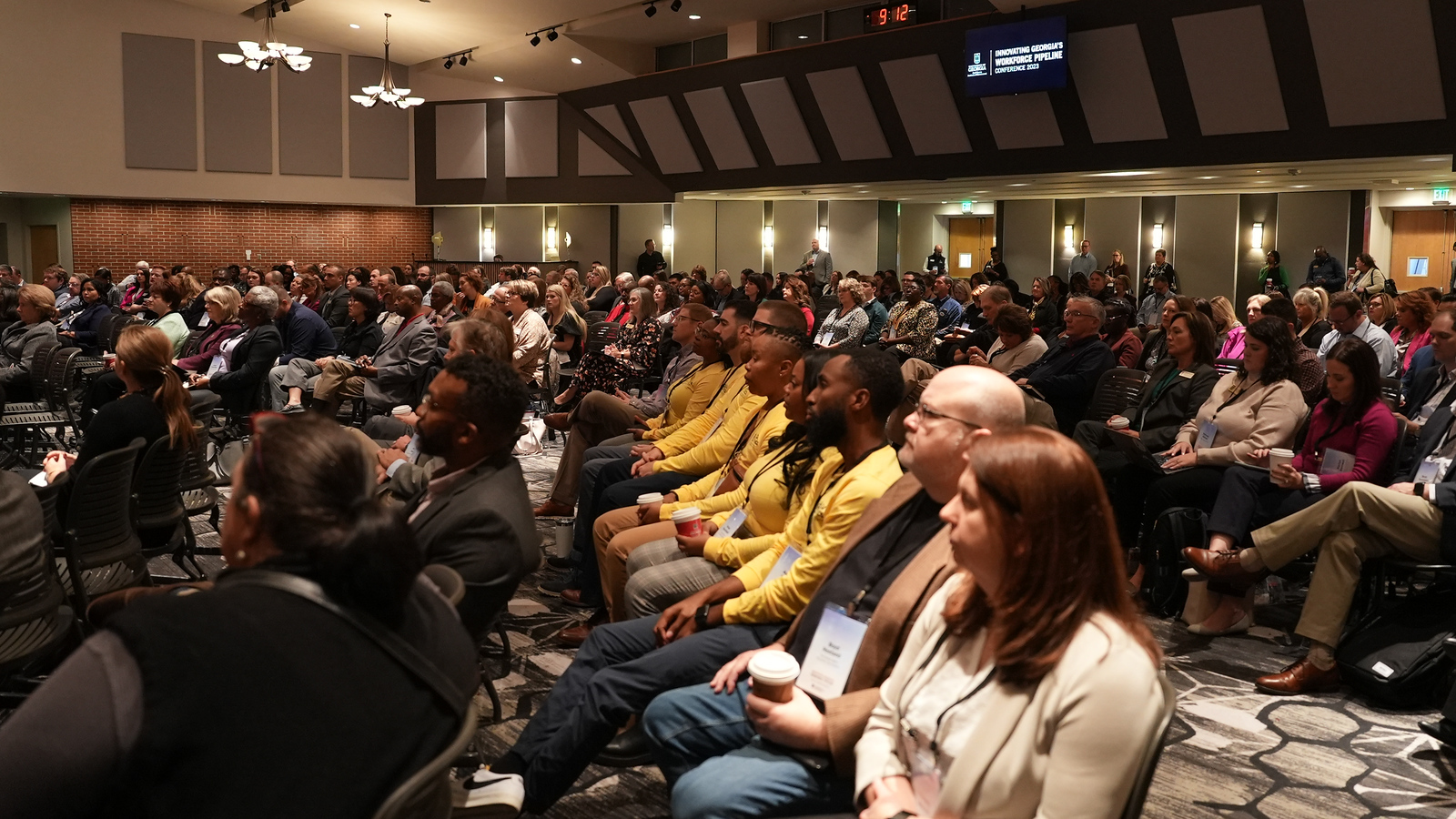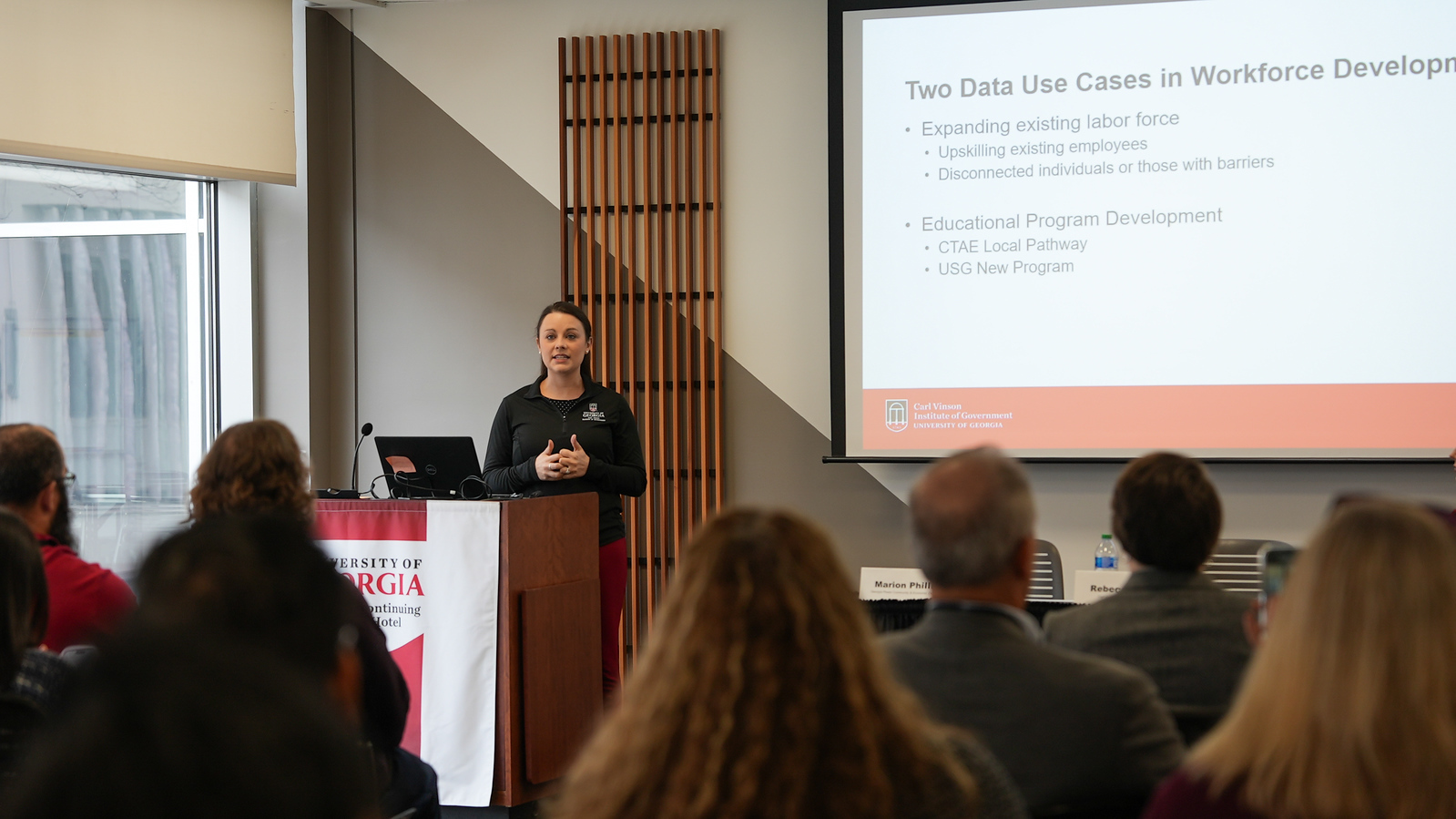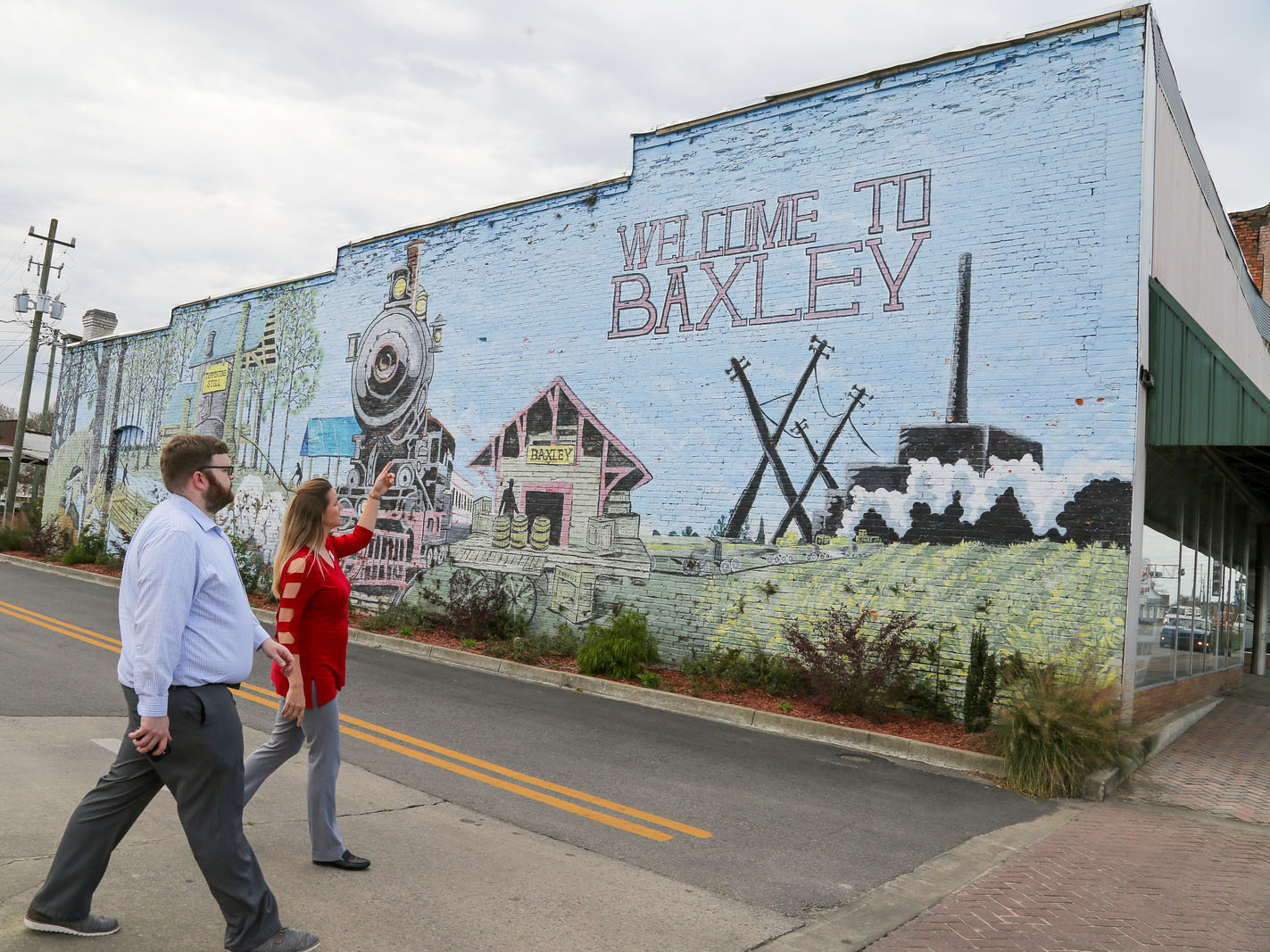Programs and Services
Programs and Services
The Georgia Workforce and Economic Resilience Center brings together numerous programs and services devoted to strengthening talent pipelines and supporting economic development across the state. A few of our most requested offerings are below.
Each year, thousands of elected and appointed government officials, development authority
board members, administrators and economic development executives benefit from our
training and professional development opportunities. We work together to improve their
knowledge and leadership skills and sharpen their understanding of key economic development
concepts and processes.
Rural Development

Professional Development

Demographic, Economic and Labor Market Analysis

Downtown and Community Development and Planning
Questions? Contact Us.
Reach out to learn more about our services.
Georgia Workforce and Economic Resilience Center Team
workforce@cviog.uga.edu
Top SERVICES

Research and Analysis
We conduct ongoing research on workforce and economic development-related topics including best practices, benchmarking, and economic, labor and educational trends. Past work includes research on the economic impact of tax policy changes, economic development initiatives, transportation and infrastructure projects, tourism, and changes in public policy. We also assist with data analysis.
Economic Impact and Incentives Modeling
Economic modeling and specialized economic impact analysis are just two ways we help government leaders plan more effectively for the future of their state and communities.
Workforce and Economic Development Strategic Planning
We provide strategic consultation, analysis, project management and facilitation for state, regional and local workforce and economic development initiatives. In addition, workforce planning requires bringing together stakeholders including local employers, Workforce Innovation and Opportunity Act (WIOA) partners, post-secondary education, K-12 and CTAE, and others. These community collaboratives then work to identify development goals and set implementation plans for achieving them.
Post-Secondary Program and Institutional Strategy
We assist higher education institutions in assessing programs, understanding local workforce trends, and developing institutional strategies to maximize service effectiveness, serve students, meet regional workforce needs and achieve measurable outcomes.